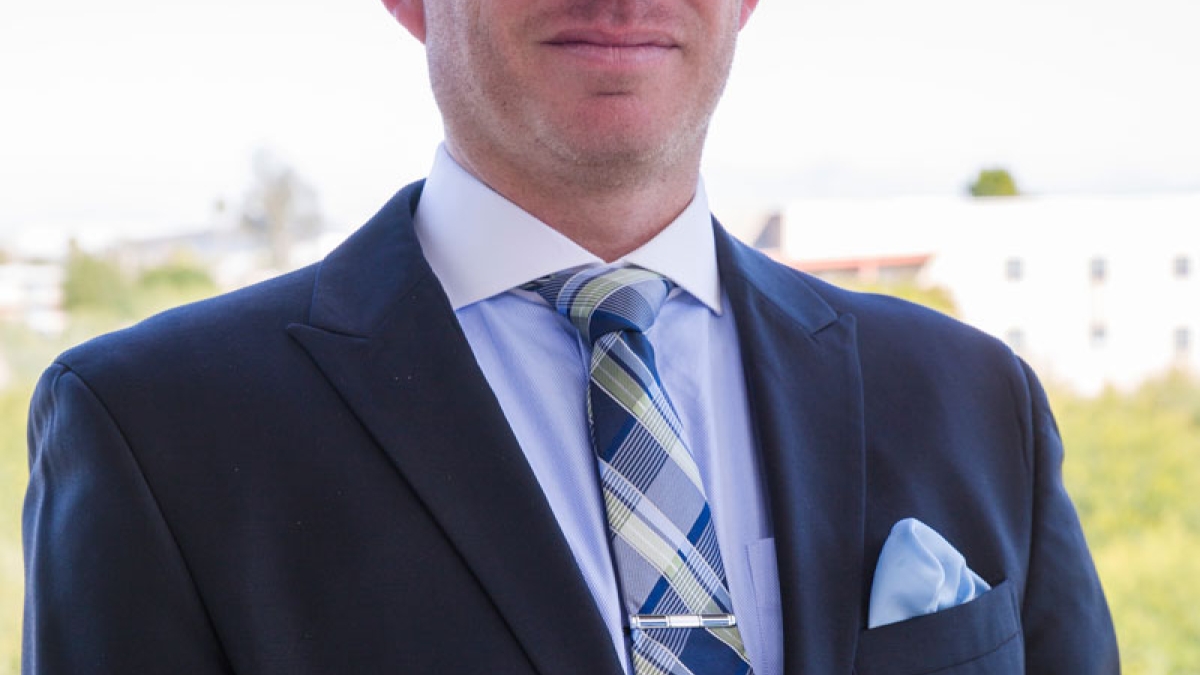Taking off on a career in aviation

Professional flight graduate Joshua Grzywa.
Editor’s note: This is part of a series of profiles for fall 2016 commencement. See more graduates here.
Joshua Grzywa used to jump out of planes as part of his work during his 15 years in the U.S. Army Infantry. Now he flies them. One conversation with an ASU Professional Flight program student at an aviation fair changed his relationship with flight. From that moment he was excited to learn how to fly.
It hasn’t always been an easy journey, but rising to the challenge has been a rewarding experience.
“Balancing heavy course loads with flight training on a regular basis is taxing to every student within the program,” Grzywa says. “Committing upwards of 12 to 15 hours per week to flight training in addition to normal class loads is not out of the norm — however, I can’t imagine anyone would trade the hours spent flying around the southwestern United States for labs or lectures.”
He credits aviation senior lecturer and chief ground instructor Marc O’Brien for getting him off the ground as a flight student.
Grzywa was chosen as the Outstanding Undergraduate for the Professional Flight program for his academic standing and involvement in student and community activities.
Name: Joshua Grzywa
Major, School: Professional Flight, the Polytechnic School, Ira A. Fulton Schools of Engineering
Hometown: Aurora, Illinois
Question: Why did you choose to come to ASU?
Answer: Attending ASU was a natural transition from my work as a Reserve Officer Training Corps instructor with the Army ROTC program here at ASU. I spent four years working with cadets as their prepared to become officers and lead the soldiers of our future Armed Forces. Once I was notified that I was going to be medically retired due to back injuries, my boss insisted that I started taking classes and overnight I became both an instructor and a student.
Q: Was there a particular “aha!” moment when you knew you were on the right path?
A: I was flying my first solo cross country flight where we are required to fly a certain distance with all flight planning and navigation done on our own. I had around 30 hours of training at this point and was just getting to cruise altitude between Marana Airport and Gila Bend. There isn’t much between those two airports other than a mine and a lot of open desert. I remember thinking that I was doing this on my own; I felt like an actual pilot and was filled with more excitement than I could remember in a long time.
Q: What are your plans after graduation? How do you see your future?
A: I am beginning my master’s in safety and human factors with the Aviation department. I will also continue to flight instruct as I build up my hours and experience. This is an exciting time to enter into the aviation industry. The demand for pilots has never been higher and as someone who would never do well in an office, I am excited that my career will take me around the country and around the world.
Q: What’s one thing unrelated to engineering that you are good at?
A: During my time at ASU, I was compelled to assist my fellow veterans following a slew of suicides by members of my former unit. With the help of my wife and a couple friends, I founded a veterans’ nonprofit called Deep Sea Valkyries. Our mission is to enhance the lives of veterans through the treatment of PTSD while introducing them to healthy recreational marine-based activities. Focusing on a holistic approach to healing, participants conduct group counseling sessions coupled with guided sea adventures and daily spiritual devotions. In July 2016, we had our maiden voyage where 20 veterans from across the country came together in the Bahamas for a week-long retreat filled with scuba diving, snorkeling, exploring remote islands and healing through group sessions. Next summer we will host two retreats and more than 40 veterans will experience much of the same. These retreats are free for the participants as each retreat is funded through private and corporate donations. This is perhaps my biggest hidden talent, seeing a social problem and being able to find a solution that, while out of the norm, is effective and long lasting.
More Science and technology

Associate professor shares her journey from NASA to ASU
From leading space missions to designing and building spaceflight hardware and training students in space science and engineering…

Famed systems engineer inspires ASU to tackle global problems
“Providing great talent with great opportunity can make a great difference.” Such was a key part of the message delivered by G.…

The science behind chronic stress
Stress comes in many shapes and sizes. There’s the everyday stress of preparing for a final exam or being stuck in traffic. And…